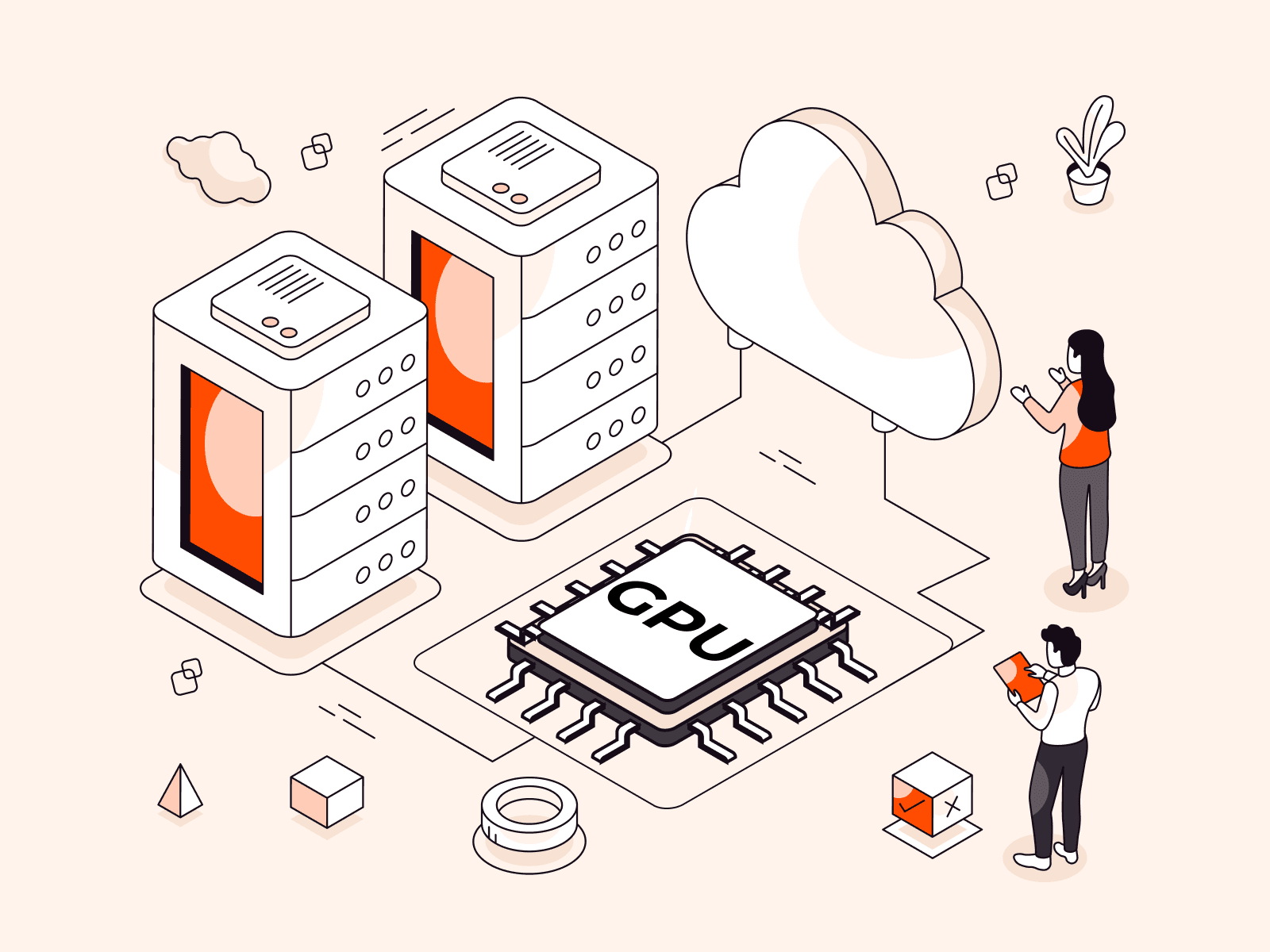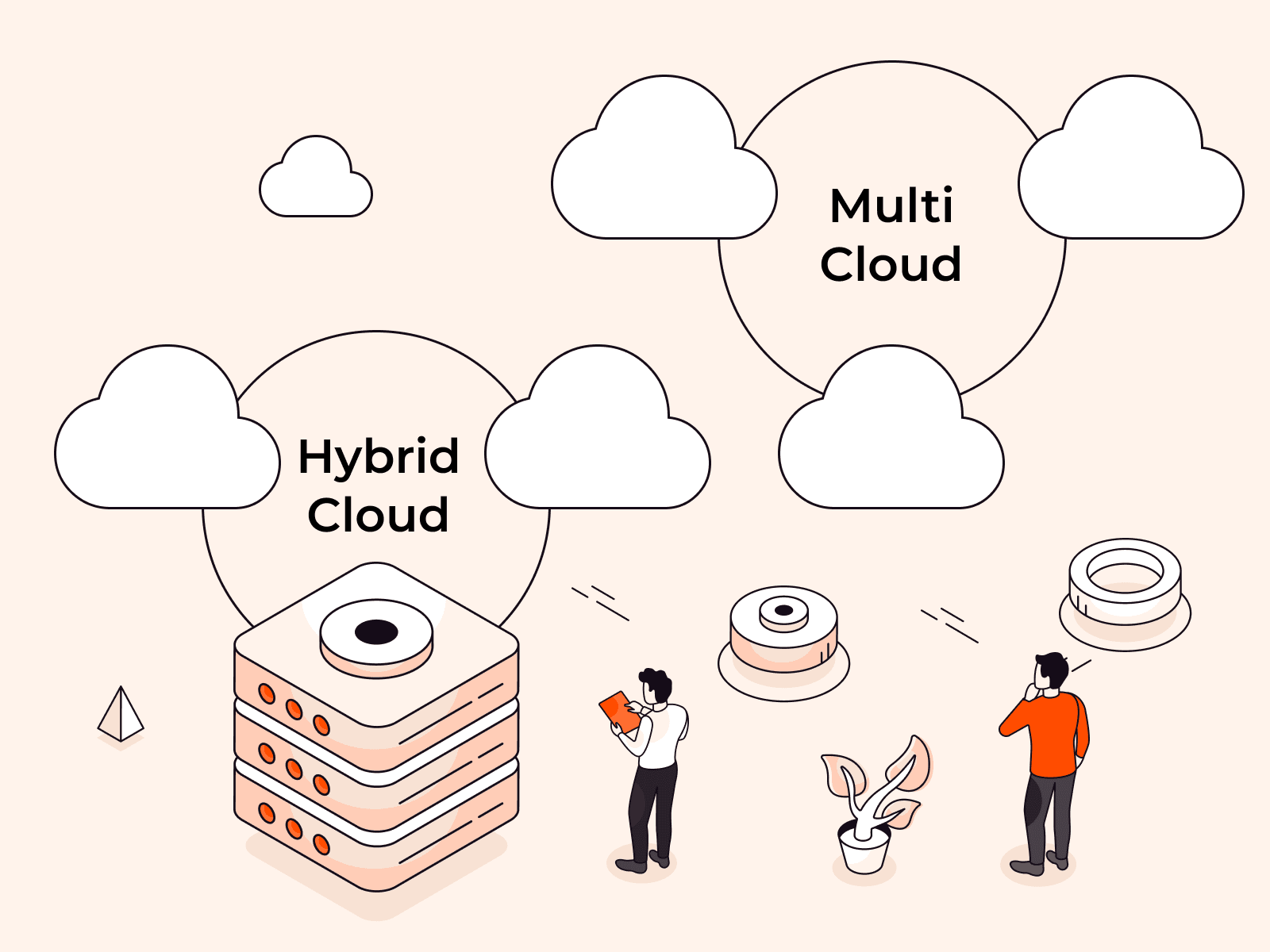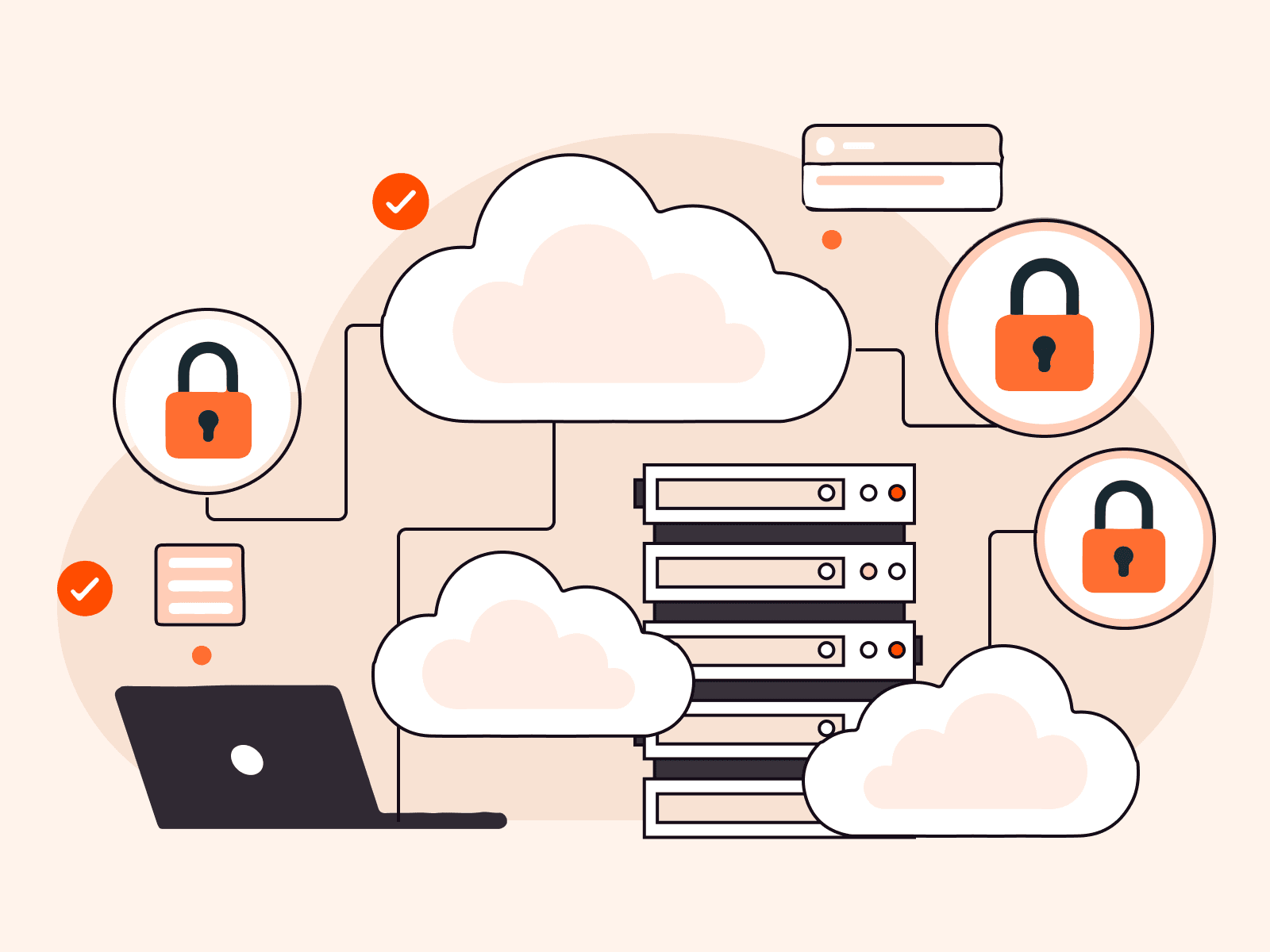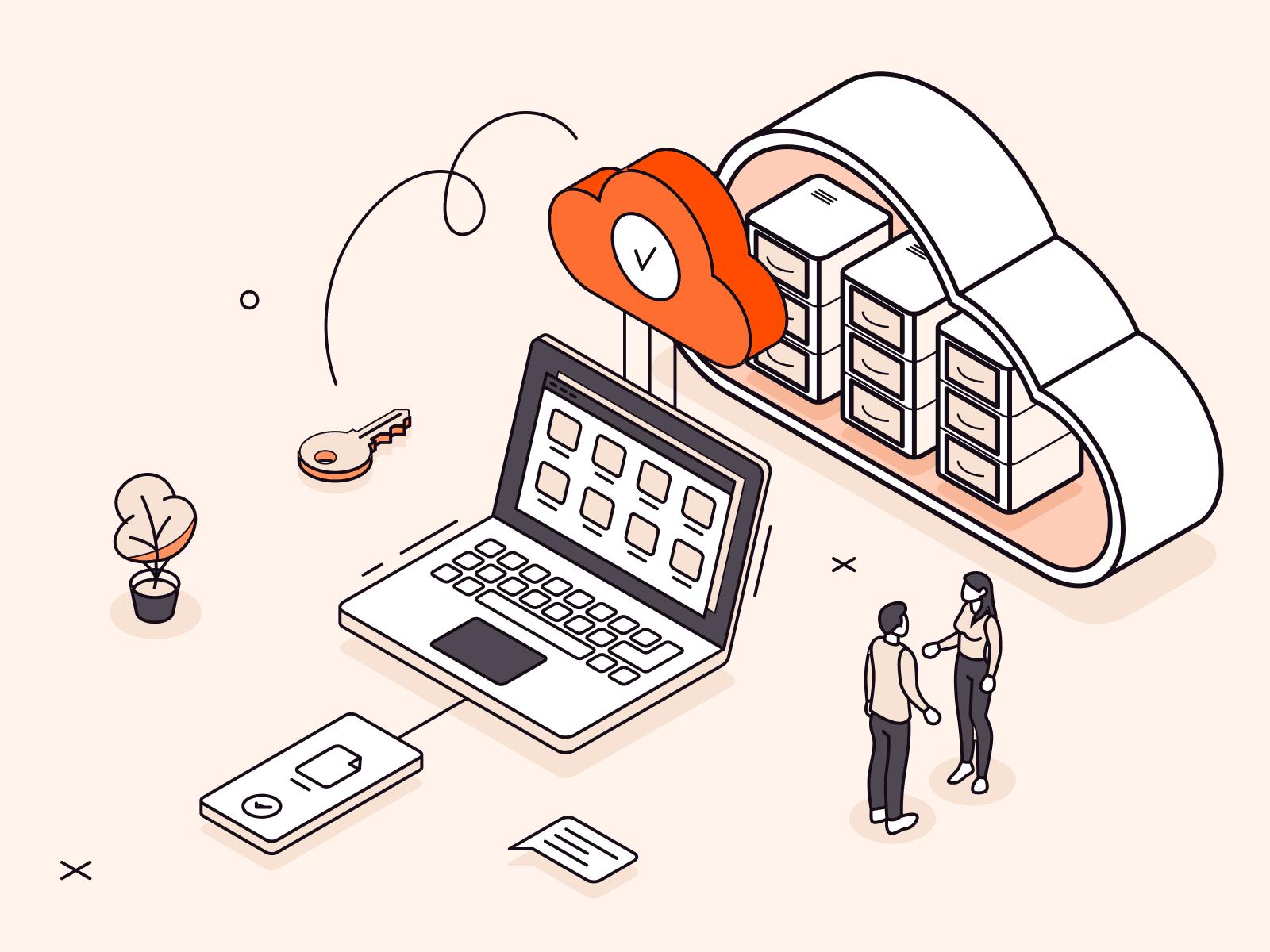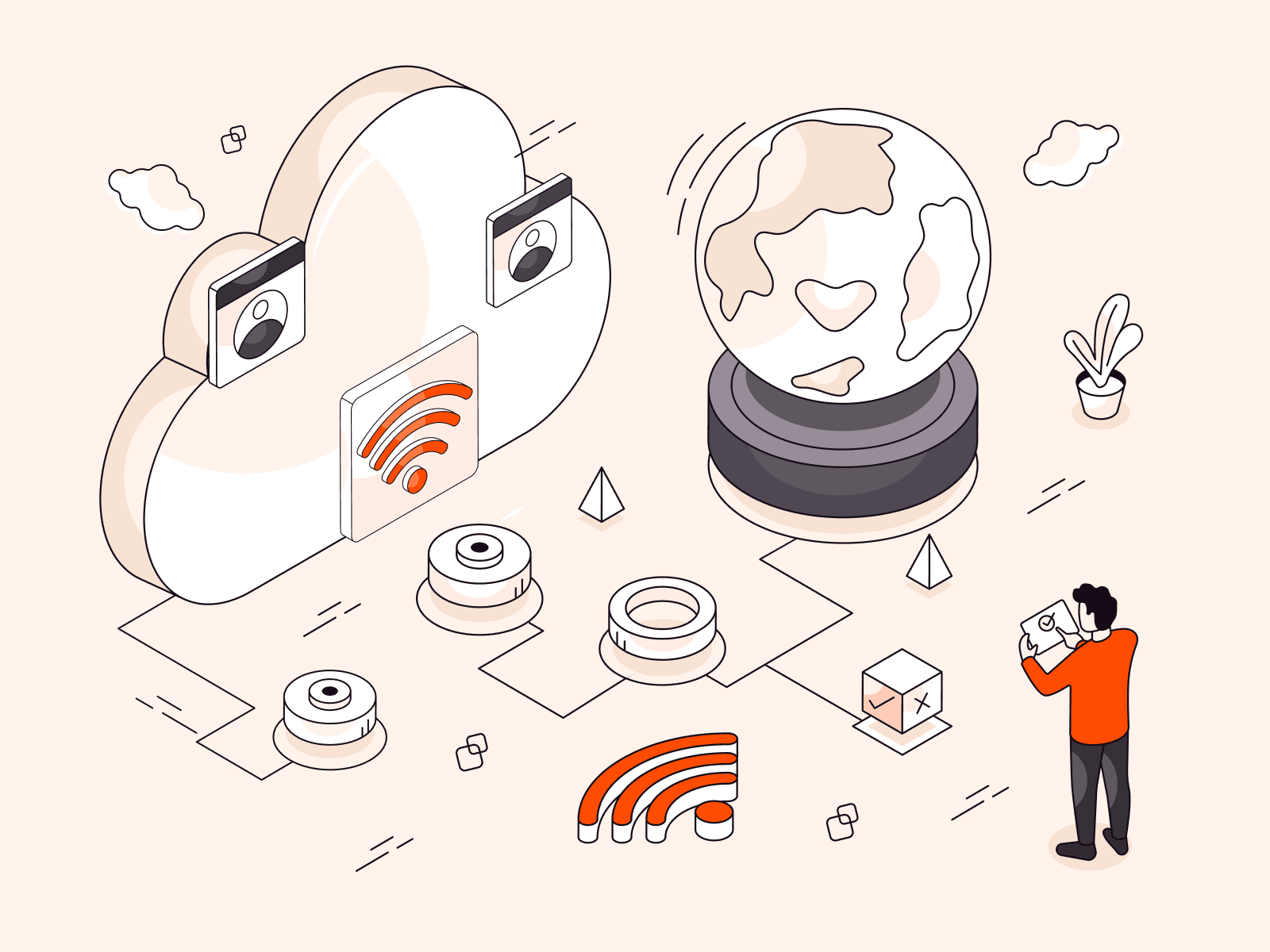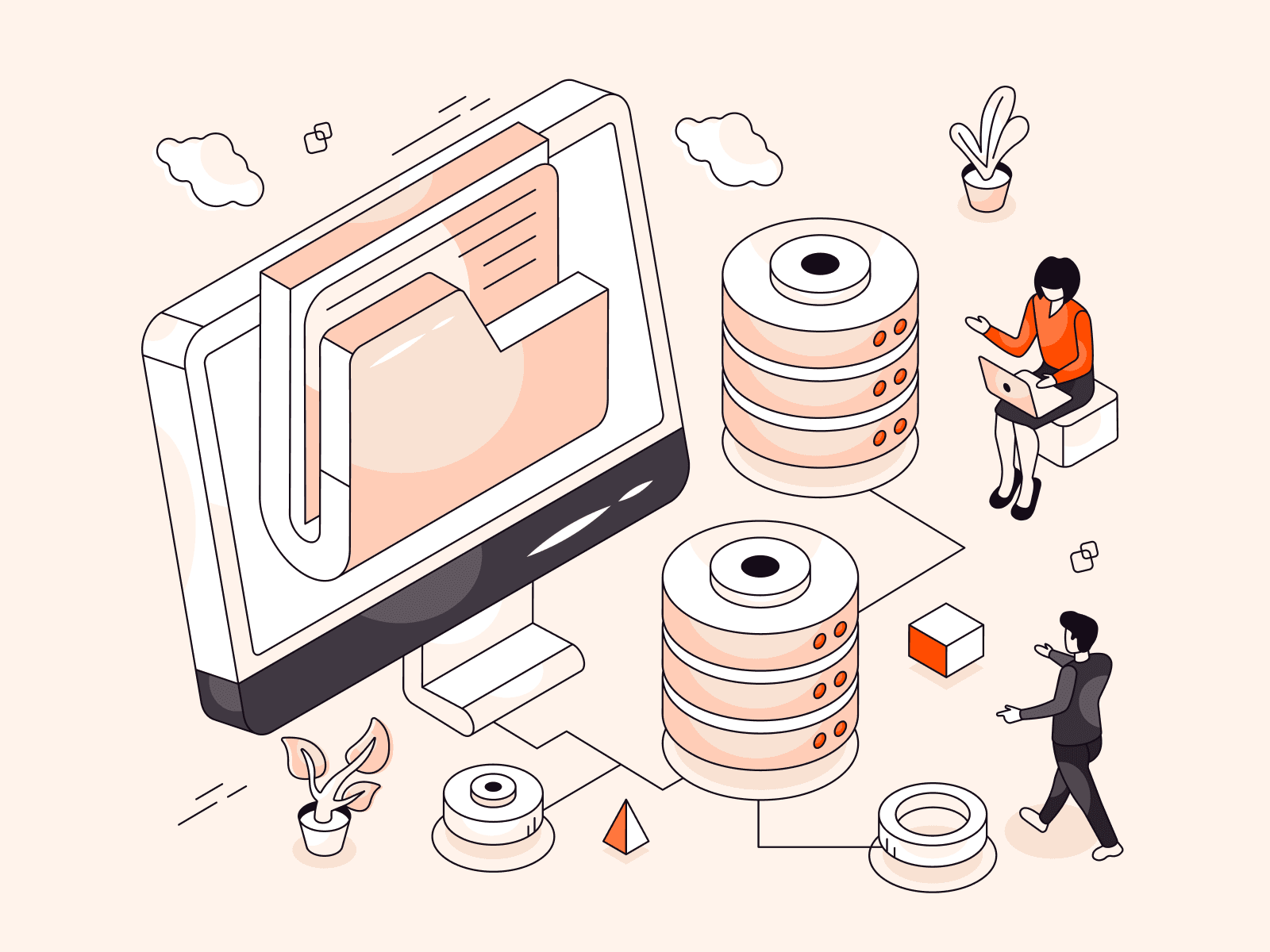A cloud GPU is a remotely rented graphics processing unit hosted in a cloud provider's data center, accessible over the internet via APIs or virtual machines. These virtualized resources allow users to access powerful computing capabilities without the need for physical hardware ownership, with hourly pricing typically ranging from $0.50 to $3.00 depending on the GPU model and provider.
Cloud GPU computing operates through virtualization technology that partitions physical GPU resources in data centers, enabling multiple users to share hardware capacity. Major cloud providers use NVIDIA, AMD, or Intel hardware to create flexible computing environments where GPU instances can be provisioned within minutes.
This system allows users to scale their GPU capacity up or down based on demand, paying only for the resources they actually consume.
The distinction between physical and virtual GPU resources centers on ownership, access, and performance characteristics. Physical GPUs are dedicated hardware components installed locally on devices or servers, providing direct access to all GPU cores and memory. Virtual GPUs represent shared physical hardware that has been partitioned among multiple users, offering flexible resource allocation with slightly reduced performance compared to dedicated hardware.
Cloud GPU services come in different configurations to meet varied computing needs and budget requirements.
These include dedicated instances that provide exclusive access to entire GPU units, shared instances that partition GPU resources among multiple users, and specialized configurations optimized for specific workloads like machine learning or graphics rendering. Leading platforms offer different pricing models, from pay-per-hour usage to monthly subscriptions with committed capacity.
Understanding cloud GPU technology has become important as organizations increasingly require powerful computing resources for artificial intelligence, data processing, and graphics-intensive applications. NVIDIA currently dominates over 80% of the GPU market share for AI and cloud computing hardware, making these virtualized resources a critical component of modern computing infrastructure.
What is a cloud GPU?
A cloud GPU is a graphics processing unit that runs in a remote data center and can be accessed over the internet, allowing users to rent GPU computing power on-demand without owning the physical hardware. Instead of buying expensive GPU hardware upfront, you can access powerful graphics processors through cloud providers like Gcore.
Cloud GPU instances can be set up within minutes and scaled from single GPUs to thousands of units depending on your computing needs, making them ideal for AI training, 3D rendering, and scientific simulations that require massive parallel processing power.
How does cloud GPU computing work?
Cloud GPU computing works by virtualizing graphics processing units in remote data centers and making them accessible over the internet through APIs or virtual machines. Instead of buying and maintaining physical GPU hardware, you rent computing power from cloud providers who manage massive GPU clusters in their facilities.
The process starts when you request GPU resources through a cloud platform's interface. The provider's orchestration system allocates available GPU capacity from their hardware pool, which typically includes high-end cards like NVIDIA A100s or H100s.
Your workload runs on these virtualized GPU instances, with the actual processing happening in the data center while you access it remotely.
Cloud providers use virtualization technology to partition physical GPUs among multiple users. This sharing model reduces costs since you're only paying for the compute time you actually use, rather than the full cost of owning dedicated hardware. The virtualization layer manages resource allocation, ensuring each user gets their allocated GPU memory and processing cores.
You can scale your GPU usage up or down in real-time based on your needs.
If you're training a machine learning model that requires more processing power, you can instantly provision additional GPU instances. When the job completes, you can release those resources and stop paying for them. This flexibility makes cloud GPUs particularly valuable for AI training, scientific computing, and graphics rendering workloads with variable resource requirements.
What's the difference between a physical GPU and a cloud GPU?
Physical GPUs differ from cloud GPUs primarily in ownership model, accessibility, and resource allocation. Physical GPUs are dedicated hardware components installed directly in your local machine or server, giving you complete control and direct access to all GPU cores. Cloud GPUs are virtualized graphics processing units hosted in remote data centers that you access over the internet through APIs or virtual machines.
Physical GPUs provide superior performance consistency since you have dedicated access to all processing cores without sharing resources.
They deliver the full computational power of the hardware with minimal latency for local operations. Cloud GPUs run on shared physical hardware through virtualization, which typically delivers 80-95% of dedicated GPU performance. However, cloud GPUs can scale instantly from single instances to clusters with thousands of GPUs, while physical GPUs require hardware procurement that takes weeks or months.
Physical GPUs work best for applications requiring consistent performance, data privacy, or minimal latency, such as real-time gaming, sensitive research, or production systems with predictable workloads.
Cloud GPUs excel for variable workloads like AI model training, batch processing, or development environments where you need flexible growing. A startup can spin up dozens of cloud GPU instances for a training job, then scale back down immediately after completion.
Cost structures differ especially between the approaches. Physical GPUs require substantial upfront investment, often $5,000-$40,000 per high-end unit, plus ongoing maintenance and power costs.
Cloud GPUs operate on pay-per-use pricing, typically ranging from $0.50 to $3.00 per hour, depending on the GPU model and provider. This makes cloud GPUs more cost-effective for intermittent use, while physical GPUs become economical for continuous, long-term workloads.
What are the types of cloud GPU services?
Types of cloud GPU services refer to the different categories and use models of graphics processing units available through cloud computing platforms. The types of cloud GPU services are listed below.
- Infrastructure as a Service (IaaS) GPUs provide raw GPU compute power through virtual machines that users can configure and manage. Gcore offers various GPU instance types with different performance levels and pricing models.
- Platform as a Service (PaaS) GPU solutions offer pre-configured environments optimized for specific workloads like machine learning or rendering. Users get access to GPU resources without managing the underlying infrastructure or software stack.
- Container-based GPU services allow users to use GPU-accelerated applications using containerization technologies like Docker and Kubernetes. This approach provides better resource isolation and easier application use across different environments.
- Serverless GPU computing automatically scale GPU resources based on demand without requiring users to provision or manage servers. Users pay only for actual compute time, making it cost-effective for sporadic workloads.
- Specialized AI/ML GPU platforms are specifically designed for artificial intelligence and machine learning workloads with optimized frameworks and tools. They often include pretrained models, development environments, and automated growing features.
- Graphics rendering services focus on visual computing tasks like 3D rendering, video processing, and game streaming. They're optimized for graphics-intensive applications rather than general compute workloads.
- Multi-tenant shared GPU services allow multiple users to share the same physical GPU resources through virtualization technology. This approach reduces costs while still providing adequate performance for many applications.
What are the benefits of cloud GPU?
The benefits of cloud GPU refer to the advantages organizations and individuals gain from using remotely hosted graphics processing units instead of physical hardware. The benefits of cloud GPU are listed below.
- Cost effectiveness: Cloud GPUs eliminate the need for large upfront hardware investments, allowing users to pay only for actual usage time. Organizations can access high-end GPU power for $0.50 to $3.00 per hour instead of purchasing hardware that costs thousands of dollars.
- Instant flexibility: Users can scale GPU resources up or down within minutes based on current workload demands. This flexibility allows teams to handle varying computational needs without maintaining excess hardware capacity during low-demand periods.
- Access to the latest hardware: Cloud providers regularly update their GPU offerings with the newest models, giving users access to advanced technology. Users can switch between different GPU types, like NVIDIA A100s or H100s, without purchasing new hardware.
- Reduced maintenance overhead: Cloud providers handle all hardware maintenance, updates, and replacements, freeing users from technical management tasks. This approach eliminates downtime from hardware failures and reduces IT staff requirements.
- Global accessibility: Teams can access powerful GPU resources from anywhere with an internet connection, enabling remote work and collaboration. Multiple users can share and coordinate GPU usage across different geographic locations.
- Rapid use: Cloud GPU instances can be provisioned and ready for use within minutes, compared to weeks or months for physical hardware procurement. This speed enables faster project starts and quicker response to business opportunities.
- Flexible resource allocation: Organizations can allocate GPU resources flexibly across different projects and teams based on priority and deadlines. This approach maximizes resource usage and prevents GPU hardware from sitting idle.
What are cloud GPUs used for?
Cloud GPUs are used for graphics processing units hosted remotely in data centers and accessed over the internet for computational tasks. The uses of cloud GPUs are listed below.
- Machine learning training: Cloud GPUs accelerate the training of deep learning models by processing massive datasets in parallel. Training complex neural networks that might take weeks on CPUs can be completed in hours or days with powerful GPU clusters.
- AI inference use: Cloud GPUs serve trained AI models to make real-time predictions and classifications for applications. This includes powering chatbots, image recognition systems, and recommendation engines that need fast response times. Read here more on what is ai inference.
- 3D rendering and animation: Cloud GPUs handle computationally intensive graphics rendering for movies, games, and architectural visualization. Studios can access high-end GPU power without investing in expensive local hardware that sits idle between projects.
- Scientific computing: Researchers use cloud GPUs for complex simulations in physics, chemistry, and climate modeling that require massive parallel processing. These workloads benefit from GPU acceleration while avoiding the high costs of dedicated supercomputing infrastructure.
- Cryptocurrency mining: Cloud GPUs provide the computational power needed for mining various cryptocurrencies through parallel hash calculations. Miners can scale their operations up or down based on market conditions without hardware commitments.
- Video processing and streaming: Cloud GPUs encode, decode, and transcode video content for streaming platforms and content delivery networks. This includes real-time video compression and format conversion for different devices and bandwidth requirements.
- Game streaming services: Cloud GPUs render games remotely and stream the video output to users' devices, enabling high-quality gaming without local hardware. Players can access demanding games on smartphones, tablets, or low-powered computers.
What are the limitations of cloud GPUs?
The limitations of cloud GPUs refer to the constraints and drawbacks organizations face when using remotely hosted graphics processing units accessed over the Internet. They are listed below.
- Network latency: Cloud GPUs depend on internet connectivity, which introduces delays between your application and the GPU. This latency can slow down real-time applications like gaming or interactive simulations that need immediate responses.
- Limited control: You can't modify hardware configurations or install custom drivers on cloud GPUs since they're managed by the provider. This restriction limits your ability to improve performance for specific workloads or use specialized software.
- Data transfer costs: Moving large datasets to and from cloud GPUs can be expensive and time-consuming. Organizations working with terabytes of data often face significant bandwidth charges and upload delays.
- Performance variability: Shared cloud infrastructure means your GPU performance can fluctuate based on other users' workloads. You might experience slower processing during peak usage times when resources are in high demand.
- Ongoing subscription costs: Cloud GPU pricing accumulates over time, making long-term projects potentially more expensive than owning hardware. Extended usage can cost more than purchasing dedicated GPUs outright.
- Security concerns: Your data and computations run on third-party infrastructure, which may not meet strict compliance requirements. Industries handling sensitive information often can't use cloud GPUs due to regulatory restrictions.
- Internet dependency: Cloud GPUs become completely inaccessible during internet outages or connectivity issues. This dependency can halt critical operations that would otherwise continue with local hardware.
How to get started with cloud GPUs
You get started with cloud GPUs by choosing a provider, setting up an account, selecting the right GPU instance for your workload, and configuring your development environment.
- Choose a cloud GPU provider: Consider your options based on geographic needs, budget, and required GPU models. Look for providers offering the latest NVIDIA GPUs (H100s, A100s, L40S) with global infrastructure for low-latency access. Consider factors like available GPU types, pricing models, and support quality.
- Create an account and configure billing with your chosen provider: Many platforms offer trial credits or pay-as-you-go options that let you test GPU performance before committing to reserved instances. Set up usage alerts to monitor spending during initial testing.
- Select the appropriate GPU instance type for your workload: High-memory GPUs like H100s or A100s excel at large-scale AI training, while L40S instances provide cost-effective options for inference and rendering. Match your GPU selection to your specific memory, compute, and budget requirements.
- Launch your GPU instance: This can be done through the web console, API, or command-line interface. Choose from pre-configured images with popular ML frameworks (PyTorch, TensorFlow, CUDA) already installed, or start with a clean OS image for custom configurations. Deployment typically takes under 60 seconds with modern cloud platforms.
- Configure your development environment: Connect via SSH or remote desktop, install required packages, and set up your workflow. Use integrated cloud storage for efficient data transfer rather than uploading large datasets through your local connection. Configure persistent storage to preserve your work between sessions.
- Test with a sample workload: Verify performance and compatibility before scaling up. Run benchmark tests relevant to your use case, monitor resource utilization, and validate that your application performs as expected. Start with shorter rental periods while optimizing your setup.
- Optimize for production: Implement auto-scaling policies, set up monitoring dashboards, and establish backup procedures. Configure security groups and access controls to protect your instances and data.
Start with shorter rental periods and smaller instances while you learn the platform's interface and improve your workflows for cloud environments.
Gcore cloud GPU solutions
When choosing between cloud and physical GPU solutions for your AI workloads, the decision often comes down to balancing performance requirements with operational flexibility. Gcore cloud GPU infrastructure addresses this challenge by providing dedicated GPU instances with near-native performance while maintaining the flexibility advantages of cloud computing. This is all accessible through our global network of 210+ points of presence with 30ms average latency.
Our cloud GPU solutions eliminate the weeks-long procurement cycles typical of physical hardware, allowing you to provision high-performance GPU instances within minutes and scale from single instances to large clusters as your training demands evolve. This approach typically reduces infrastructure costs by 30-40% compared to maintaining fixed on-premise capacity, while our enterprise-grade infrastructure ensures 99.9% uptime for mission-critical AI workloads.
Discover how Gcore cloud GPU solutions can accelerate your AI projects while reducing operational overhead.
Frequently asked questions
How does cloud GPU performance compare to local GPUs?
Cloud GPU performance typically delivers 80-95% of local GPU performance while offering instant flexibility and lower upfront costs. Local GPUs provide maximum performance and predictable latency but lack the flexibility to scale resources on demand.
What are the security considerations for cloud GPUs?
Yes, cloud GPUs have several critical security considerations, including data encryption, access controls, and compliance requirements. Key concerns include securing data in transit and at rest, managing multi-tenant isolation in shared GPU environments, and meeting regulatory standards like GDPR or HIPAA for sensitive workloads.
What programming frameworks work with cloud GPUs?
Yes, all major programming frameworks work with cloud GPUs including TensorFlow, PyTorch, JAX, CUDA-based applications, and other parallel computing libraries. Cloud GPU providers typically offer pre-configured environments with GPU drivers, CUDA toolkits, and popular ML frameworks already installed.
How much do cloud GPUs cost compared to buying hardware?
Cloud GPUs cost $0.50-$3.00 per hour while comparable physical GPUs require $5,000-$40,000 upfront plus ongoing maintenance costs. For occasional use, cloud GPUs are cheaper, but heavy continuous workloads favor owned hardware after 6-12 months of usage.
Related articles
Subscribe to our newsletter
Get the latest industry trends, exclusive insights, and Gcore updates delivered straight to your inbox.
